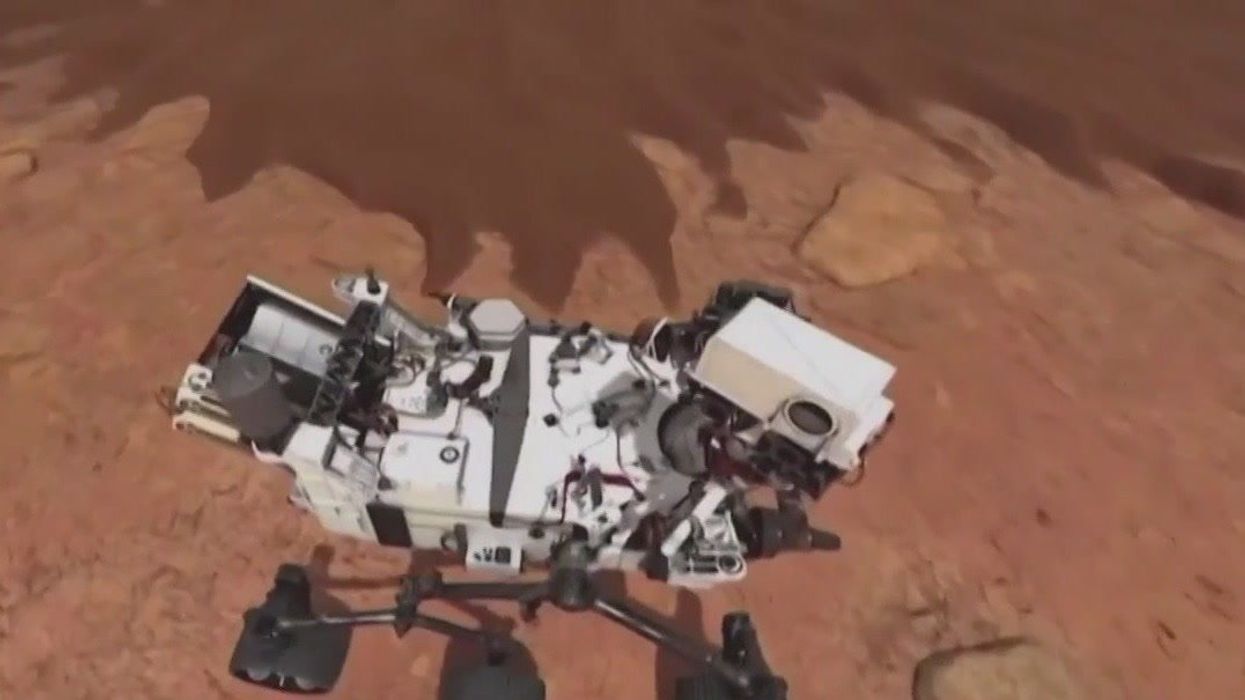Ellie Abraham
Dec 02, 2024
NASA experiment creates oxygen on Mars
Fox - 13 News / VideoElephant
A strange polygon structure has been discovered below the surface of Mars, giving experts new insights into the planet’s make-up.
Advancements in technology have allowed scientists to uncover amazing revelations about our universe, like the giant water reservoir floating in space and an “overweight” planet that “should not exist”.
The new discovery on the surface of Mars has come from the Chinese rover Zhurong, which is the first Chinese mission the land on the red planet.
Zhurong is exploring Utopia Planitia – one of Mars’ biggest impact basins – and is already bringing new insights thanks to new technology that has developed since it was last explored by Viking 2 in 1976.
Under the surface, the Chinese rover found 16 buried polygonal structures that experts believe were formed by the freeze-thaw cycle that created cracks in the terrain when it was at the surface.
In a study published in Nature Astronomy, it was revealed the radar on the Zhurong rover found the polygonal structures 35 metres down and looked at what they looked like horizontally, across 1.9 kilometres, for the first time.
Previous evidence has revealed that floods took place in the basin around 3 billion years ago and that the structures were formed by sediment and other thermal processes.
There was no evidence that the structures were formed through lava, like some polygonal structures seen on Earth, such as the Giant’s Causeway in Northern Ireland.
The study helped confirm that early Mars’ atmosphere was varied, in order to have created the freeze and thaw process. Experts suspect Mars may have once had a higher obliquity (axial tilt) than it does now, meaning its seasons could have been extremely different.
The study authors explained: “Occurring at low latitudes (∼25° N), the polygonal terrain, which is interpreted as having most likely formed by thermal contraction cracking, makes a compelling case for the high obliquity of early Mars.
“The subsurface structure with the covering materials overlying the buried palaeo-polygonal terrain suggests that there was a notable palaeoclimatic transformation some time thereafter.”
This article was originally published on 4 January, 2024.
How to join the indy100's free WhatsApp channel
Sign up to our free indy100 weekly newsletter
Have your say in our news democracy. Click the upvote icon at the top of the page to help raise this article through the indy100 rankings.
Top 100
The Conversation (0)














